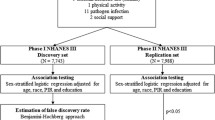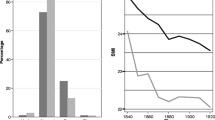Abstract
An attempt was made to evaluate the nutritional status of the aged based on three large-scale federally sponsored surveys and several smaller studies. The evaluation is confounded by economic, socio-cultural, and genetic differences of the elderly as well as lack of agreement in methodology used and interpretation of the data obtained. Some general conclusions, however, can be reached. Calories, calcium, iron, thiamin, riboflavin, niacin, vitamin A and ascorbic acid were consumed in amounts less than two-thirds of the RDA by substantial percentages of the elderly (approaching 50% for many nutrients). Protein intake tended to be adequate. Hemoglobin values were low for approximately 1 out of 10 elderly whites and 1 out of 4 elderly blacks. Biochemical indices of vitamin status were much less likely to be inadequate, i.e., 1% to 17% of the populations surveyed. Obesity, apparently related to physical inactivity rather than caloric excess, was a major finding. Inadequate nutrient intakes of the aged tended to be associated with inadequate income, being female and/or being black.
Similar content being viewed by others
References
U.S. Bureau of the Census, Current Population Reports. Demographic Aspects of Aging and the Older Population in the United States. J. S. Siegel and Associates. Special Studies, p. 23, No. 59. Washington, D.C.: U. S. Govt. Printing Office, 1978.
Consumer and Food Economics Research Division, Agricultural Research Service. Food and nutrient intake of individuals in the United States, Spring, 1965: Household Food Consumption Survey, 1965–66, Report No.11.
Ten-State Nutrition Survey 1968–1970. I. Historical Development, and II. Demographic Data; III. Clinical, Anthropometry, Dental; IV. Biochemical; V. Dietary; and Highlights, 1972. DHEW Publication No. (HSM)72-8130,-8131,-8132,-8133, and-3134.
U. S. Department of Health, Education, and Welfare. Preliminary Findings of the First Health and Nutrition Examination Survey, United States, 1971–1972: Dietary Intake and Biochemical Findings; and Anthropometric and Clinical Findings. 1974, 1975. DHEW Publication No. (HRA) 74-1219-1 and 75-1229.
U. S. Department of Health, Education and Welfare. Data from the National Health Survey: Dietary Intake Findings, United States, 1971–1974. 1977. DHEW Publication No. (HRA) 77-1647.
National Research Council, Food and Nutrition Board. Recommended Dietary Allowances, 8th revised ed. National Academy of Sciences, Washington, D.C., 1974.
Interdepartmental Committee on Nutrition for National Defense. Manual for Nutrition Surveys. 2nd ed., U. S. Govt. Printing Office, Washington, D.C., 1963.
McGandy, R. B., Barrows, C. H., Spanias, A., Meredith, A., Stone, J. L., and Norris, A. H.: Nutrient intakes and energy expenditure in men of different ages. J. Geront., 21:581–587, 1966.
Joering, E.: Nutrient contribution of a meals program for senior citizens. J. Amer. Dietet. Assoc., 59: 129, 1971.
Brown, P. T., Bergan, J. C., Parsons, E. P., and Krol, I.: Dietary status of elderly people. J. Amer. Dietet. Assoc., 71:41, 1977.
Guthrie, H. A., Black, K., and Madden, J. P.: Nutritional practices of elderly citizens in rural Pennsylvania. The Gerontologist, 12:330–335, 1972.
Davidson, C. S., Livermore, J., Anderson, R., and Kaueman, S.: The nutrition of a group of apparently healthy, aging persons. Amer. J. Clin. Nutr., 10:181–199, 1962.
Jordan, V. E.: Protein status of the elderly as measured by dietary intake, hair tissue, and serum albumin. Amer. J. Clin. Nutr., 29:522, 1976.
Harrill, I., and Cervone, N.: Vitamin status of older women. Amer. J. Clin. Nutr., 30:431–440, 1977.
Justice, C. L., Howe, J. M., and Clark, H. E.: Dietary intakes and nutritional status of elderly patients. J. Amer. Dietet. Assoc., 65:639, 1974.
Harrill, I., Erbes, C., and Schwartz, C.: Observations on food acceptance by elderly women. The Gerontologist, 16:349–355, 1976.
Pao, E. M., and Hill, M. M.: Diets of the elderly, nutrition-labeling and nutrition education. J. Nutr. Ed., 6:96–99, 1974.
Author information
Authors and Affiliations
Additional information
This paper as a part o f the mini-symposium on nutrition and aging organized by Charles Ho Barrows, Jr., and presented on Thursday, September 29, 1977 as part of the 7th Annual Meeting of the American Aging Association in New York City.
About this article
Cite this article
Beauchene, R.E., Davis, T.A. The nutritional status of the aged in the U.S.A.. AGE 2, 23–28 (1979). https://doi.org/10.1007/BF02432211
Issue Date:
DOI: https://doi.org/10.1007/BF02432211




